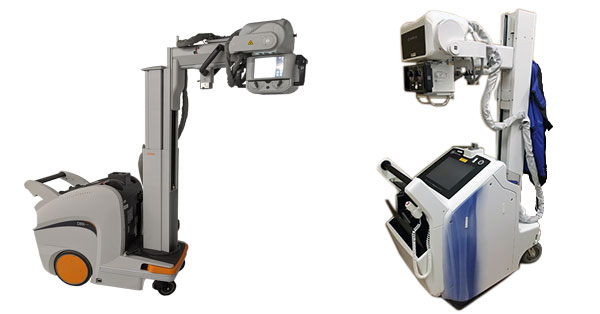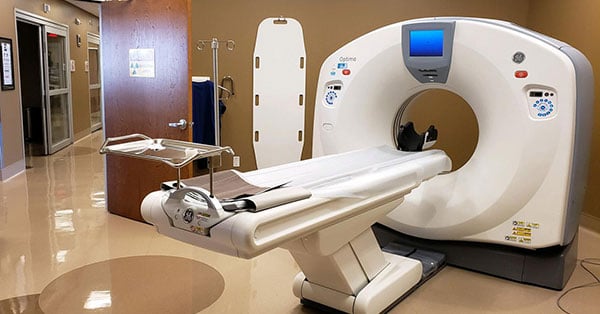
For those considering the next tier of digital X-ray solutions, a portable can be a great place to look for space and cost savings. Finding the right unit that can provide high quality images, survive the bumps and bruises of a fast pace clinical environment, and give doctors and techs the confidence needed to serve patients is essential.
Today we're going to review two popular models on the secondary market that just might fit the bill: the GE Optima 220 and the Carestream DRX Revolution, both native digital systems. Keep reading to see where each of these models shines.
Optima XR220 vs. DRX Revolution
Where the GE Wins
Long held as the standard in digital X-ray equipment, the Optima 200 series was the second launch of native GE digital solutions that GE produced, preceded by the AMX700, along with a host of full-size digital rad room systems.
Flexibility
Upon its introduction, the GE digital package took the market by storm. It allowed for GE Flashpad detectors to be shared between systems, and it featured a uniquely sized 16x16 image grid. The larger field of view allows for increased workflow by reducing the number of exposures needed to capture an image, saving time and money for the facility.
Service
Coupled with the GE name are a host of benefits, including parts availability, broad-base engineering expertise, and high technician familiarity. Each of these aspects has a trickle-down effect for efficiency, down-time savings, and cost savings.
It's worth noting that after initial launch, a few connectivity errors surfaced in the XR220 product. GE fixed these later in the production run, but we still recommend double-checking the connectivity on this portable with your service engineer.
Where the Carestream Wins
While their healthcare Information systems business was recently acquired by Philips, Carestream remains one of the most popular brands of X-ray equipment in the industry. They've focused primarily on X-ray since their inception, and the reputation this has afforded them is significant.
Image Quality
The DRX Revolution portable is no exception to the Carestream level of quality. The company's software is renowned as one of the highest grade products, delivering exceptional image quality. Solutions as old as 2012 are still providing top-level images. On top of that, the software that guides users through image acquisition is user-friendly and a strong fit for fast-paced ortho clinics or high-volume hospitals.
Durability
As our team has brought these units into inventory from multiple environments, we've noticed that heavy, day-in-day-out use of these portables does not diminish their image quality, connectivity, or user experience. From an engineering perspective, this unit has a simple internal layout that reduces service errors and complications.
Cost Comparison
Depending on the age, location, and overall condition of a given unit (and the warranty coverage you choose), both of these models are available in a similar price range: $55,000 - $90,000.
The Takeaway
Looking at their separate strengths and similar cost, we believe these systems are neck-and-neck in quality and overall value, especially when they are refurbished and maintained by a knowledgeable engineering team. Either system can serve your team well in image quality and reliability.
If you'd like to know more, our team is ready to help. Use the button below to tell us about your project, or give us a call, and we'll be happy to offer guidance in selecting the best system for you.

Tony Baggett
Tony Baggett is an X-Ray Product Manager at Block Imaging. Tony assists imaging centers, hospitals, and orthopedic centers in their purchases of x-ray equipment. When he’s not serving customers, Tony can be found hunting, fishing, and camping with his wife, son, and daughter.






